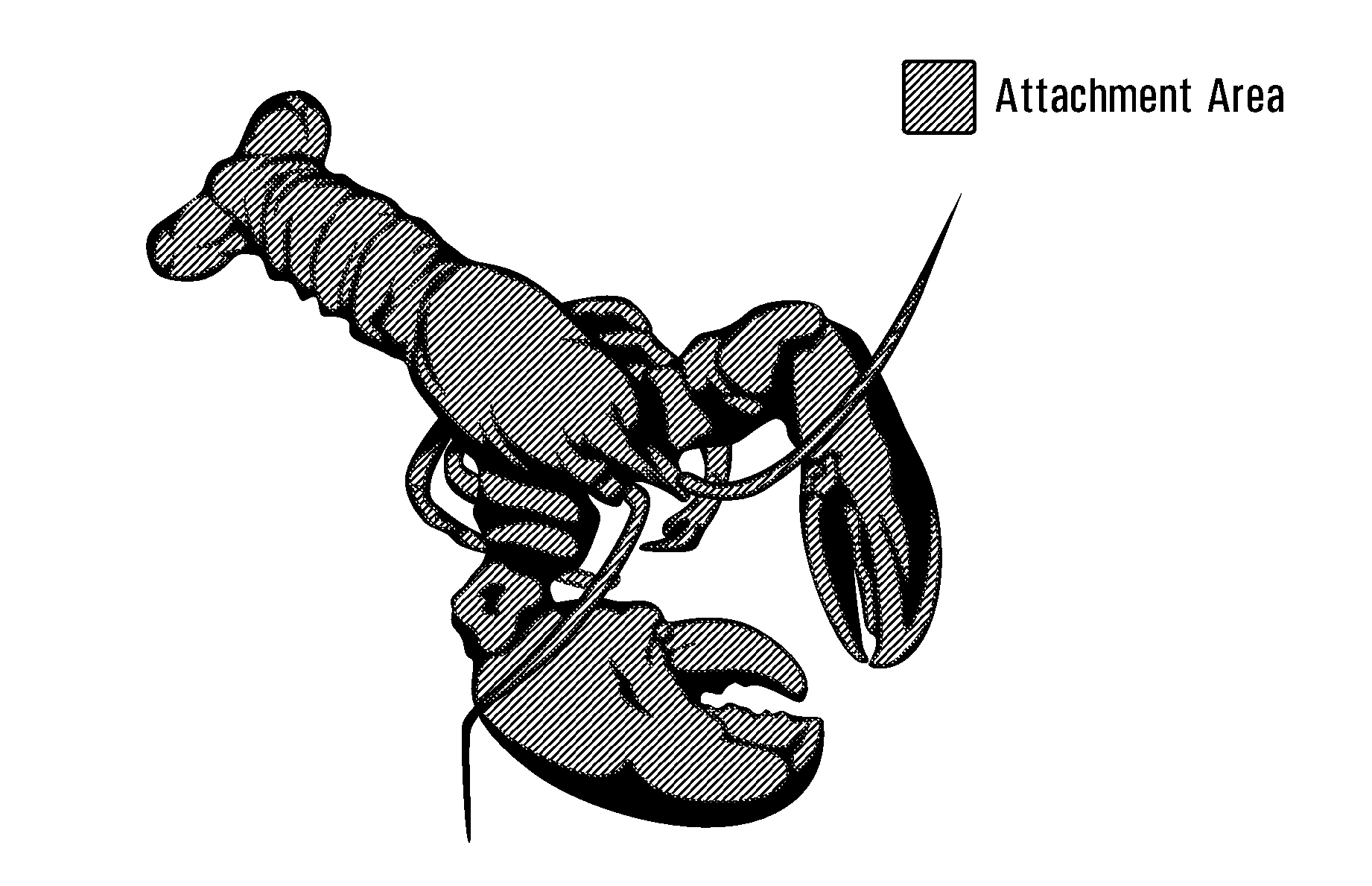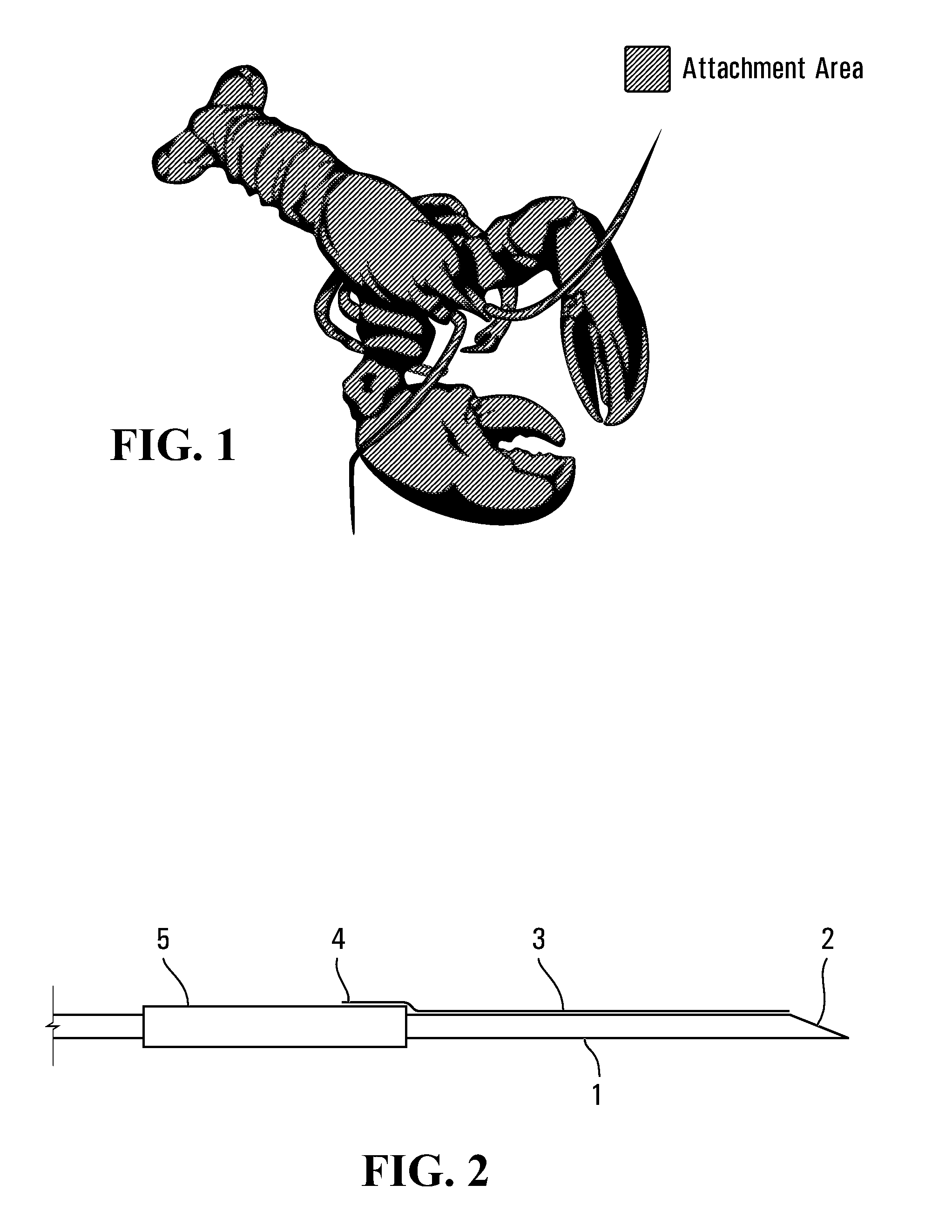Preparation of eviscerated raw whole lobster
a raw, lobster technology, applied in the field of processing whole lobsters, can solve the problems of difficult to provide whole lobsters to consumers, many consumers have neither the expertise nor the proper equipment to maintain and care for live lobsters, and cooking live lobsters can be distasteful for consumers
- Summary
- Abstract
- Description
- Claims
- Application Information
AI Technical Summary
Benefits of technology
Problems solved by technology
Method used
Image
Examples
example 1
Impact of Freezing Method
[0061]Lobsters were processed using high pressure treatment at 29,000 psi for 45 seconds. Following pressurization, the lobsters were frozen by passage through a nitrogen tunnel for 15 minutes at −145 degrees C. Frozen lobsters were thawed by water immersion over a three hour period.
[0062]Thawed lobsters were cooked using exposure to steam for 18 minutes.
[0063]The appearance of the nitrogen frozen meat was inferior to the appearance of meat frozen using regular methods. No significant improvement in the flavour or texture of meat was observed using nitrogen freezing.
example 2
Impact of Evisceration and Flushing
[0064]Lobsters were processed using high pressure treatment at 29,000 psi for 45 seconds. Following pressure treatment, the lobsters were eviscerated using vacuum aspiration through the oral cavity using a rotary vane vacuum pump with collecting chambers at a working vacuum pressure that varied between 5 and 30 inches of Hg. Evisceration resulted in removal of all of the hepatopancreas in 75% of the animals and minor traces of the hepatopancreas in the remaining 25% of the animals. A subset of the eviscerated lobsters were flushed with water following evisceration and water was extracted with a suction device.
[0065]Following evisceration, the lobsters were cooked by exposure to steam for 18 minutes. The results indicated that eviscerated lobsters were superior to uneviscerated lobsters in the whiteness of the meat, the texture and the flavour. Those lobsters which were flushed following evisceration showed a very slightly inferior appearance and a ...
example 3
Impact of Evisceration Using an Anterior Wand
[0066]Live lobsters were processed using high pressure treatment at 29,000 psi for 45 seconds. Following pressure treatment, the lobsters were eviscerated vacuum aspiration using an air-actuated diaphragm pump at a working vacuum pressure that varied between 5 and 30 inches of Hg. One subset of these lobsters was eviscerated by inserting the vacuum wand through the oral cavity of the lobster. The other subset of lobsters was eviscerated by inserting the vacuum wand through the sinus region of the ventral abdomen.
[0067]Each of the two subsets were split open to determine the effectiveness of the evisceration process by observing the completeness of the viscera removal. In all cases of wand insertion through the oral cavity, a fraction of the hepatopancreas remained in the anterior region of the lobster body behind the eyes where the antennal glands are located. In all cases of the wand insertion through the abdomen, no traces of hepatopanc...
PUM
 Login to view more
Login to view more Abstract
Description
Claims
Application Information
 Login to view more
Login to view more - R&D Engineer
- R&D Manager
- IP Professional
- Industry Leading Data Capabilities
- Powerful AI technology
- Patent DNA Extraction
Browse by: Latest US Patents, China's latest patents, Technical Efficacy Thesaurus, Application Domain, Technology Topic.
© 2024 PatSnap. All rights reserved.Legal|Privacy policy|Modern Slavery Act Transparency Statement|Sitemap


